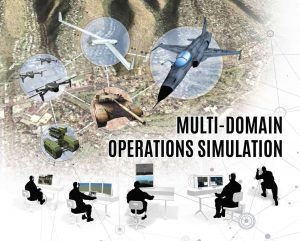
Trouble has struck at a vast manufacturing plant. A digital twin system – a software that is a virtual, real-time replica of the facility’s production line – has just detected a machinery breakdown on the floor and operations in that sector have ground to a halt.
It spells disaster. The inability to churn out goods at maximum capacity could delay customers’ orders. The digital twin, which is connected to the facility through sensors, immediately forecasts a drastic drop in revenue for the month. If the situation is not resolved soon, the manufacturer would suffer a financial blow on top of having to appease disgruntled clients.
Fortunately, this smart technology not only detects and predicts problems but also provides instant solutions. The system immediately redirects another available assembly line to take over the work, reconfigures the product flow to the new assembly line, monitors and ensures the new assembly line is operating at full speed. The goods output returns to normal levels. Crisis averted.
This is manufacturing magic at its finest, thanks to digital twinning and reconfigurable manufacturing. In a highly competitive sector that is focused on maximising profits and reducing costs, manufacturers are always facing pressure to increase quality and productivity. The slightest delay or smallest machine failure could be catastrophic.
Digital twinning is the antidote to these issues. The high-performance Artificial Intelligence (AI) platform is a dynamic tool that can seamlessly connect the physical and digital worlds, paving the way for endless possibilities. In this age of Industry 4.0 where interconnectivity is key, digital twinning is poised to take the sector to the next level.
Demand for the technology is already growing at a phenomenal pace. A report from market research company MarketsandMarkets showed that the global digital twin market, valued at US$3.1 billion in 2020, is estimated to hit a staggering US$48.2 billion by 2026.
A multi-talented product
Adopting a digital twin system gives manufacturers three major advantages.
First, it is the ultimate watchdog that frees up manufacturers to focus on long-term goals. The technology’s real-time monitoring abilities can instantly detect when something goes wrong, no matter how vast the production floor. Issues can be fixed quickly, ensuring production optimisation at all times.
Second, it provides spot-on performance analysis and prediction. Manufacturers are always looking for ways to operate their production line efficiently . To this end, digital twinning offers an accurate assessment of feasibility and costs without the need for tedious production trial runs that reduce operational capacity.
Lastly, it is an efficient testbed. The sheer diversity of products today has intensified demands on manufacturing, as factories need to be easily configurable to produce all sorts of different goods.
A digital twin enables adaptive and flexible manufacturing to assess new customisations for various products –reducing the need for laborious physical testing that may lead to costly miscalculations.
Flexible and fluid
Implementing a digital twin comes with a few challenges though. As it is a massive upgrade, manufacturers have to ensure that the right infrastructure is in place to accommodate the cutting-edge technology.
For example, a digital twin requires rapid connectivity on a 5G scale because of the sheer number of IoT smart sensors that have to be installed. These allow manufacturers to always receive instantaneous updates from the floor.
High-performance computing is another requirement. Just like how a Ferrari needs high-octane, premium fuel to function at its best, a digital twin needs the best IT infrastructure to fulfil its maximum potential. For instance, the IoT smart sensor suites will provide real-time status updates from the equipment in the production floor, and dedicated IT servers are needed to process these vast amounts of data to make near real-time health assessments of the whole plant. If problems are detected, the same servers would need to reconfigure the production line. High-performance computing is the backbone in the implementation of digital twins.
But once all the infrastructure is in place, manufacturers still need to configure the digital twin to their specific requirements in order to reap immediate benefits.
Implementation can be done at various levels, ranging from a plant-level concept, where the technology provides a generic overview of the entire facility, to the machine level, where it can monitor details right down to the fluid pressure of individual instruments.
The future of manufacturing
As manufacturing technology continues to mature and advance, the greater the role of digital twinning.
Being a bridge between the physical and virtual world, digital twin technology sets to improve manufacturing processes as engineers will be able to access production statuses in real-time, implementing changes if required while manufacturing is ongoing. This reduces unnecessary costs and speeds up production. Digital twin technology plays a critical role in manufacturing and the benefits to be realised are endless. It provides a lot of value to manufacturers across various sectors, bringing cost and production efficiencies. It makes life a little easier in the tough world of manufacturing.













